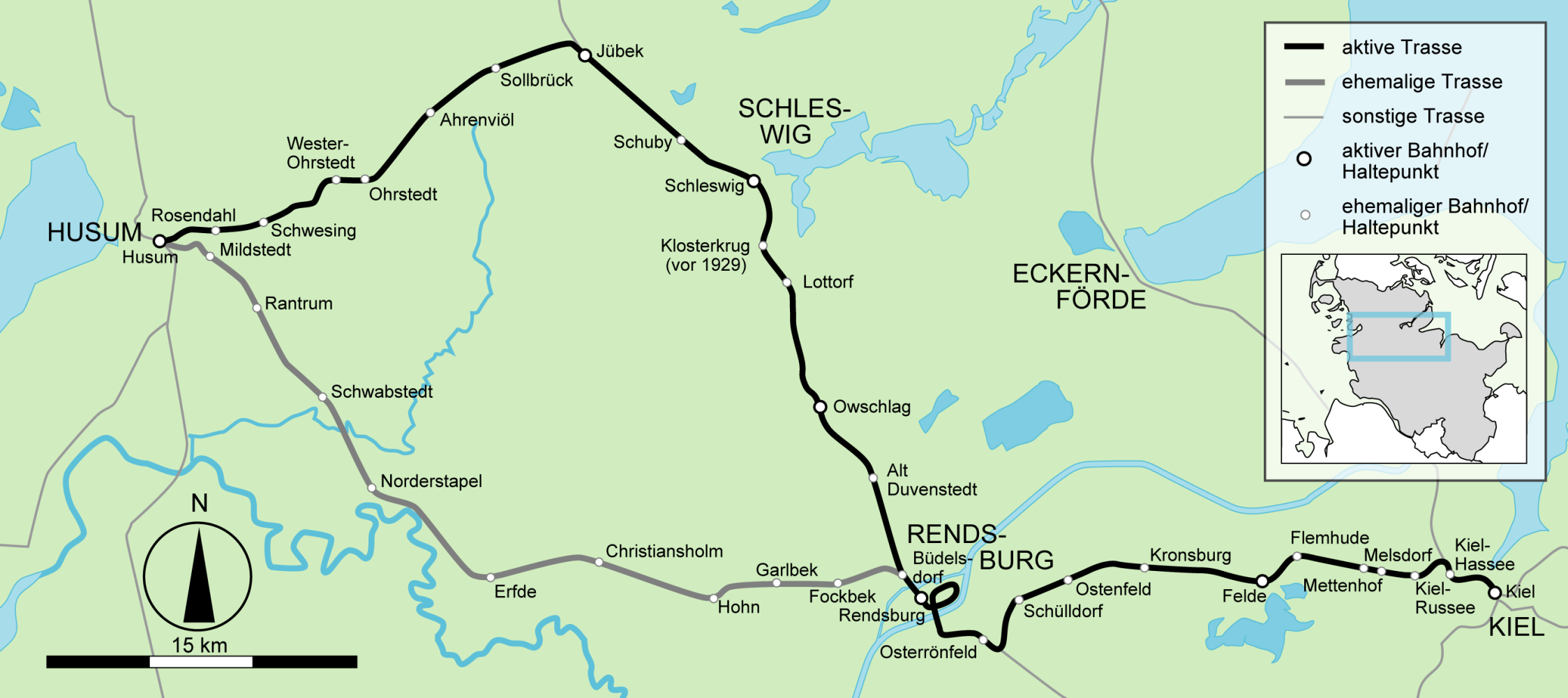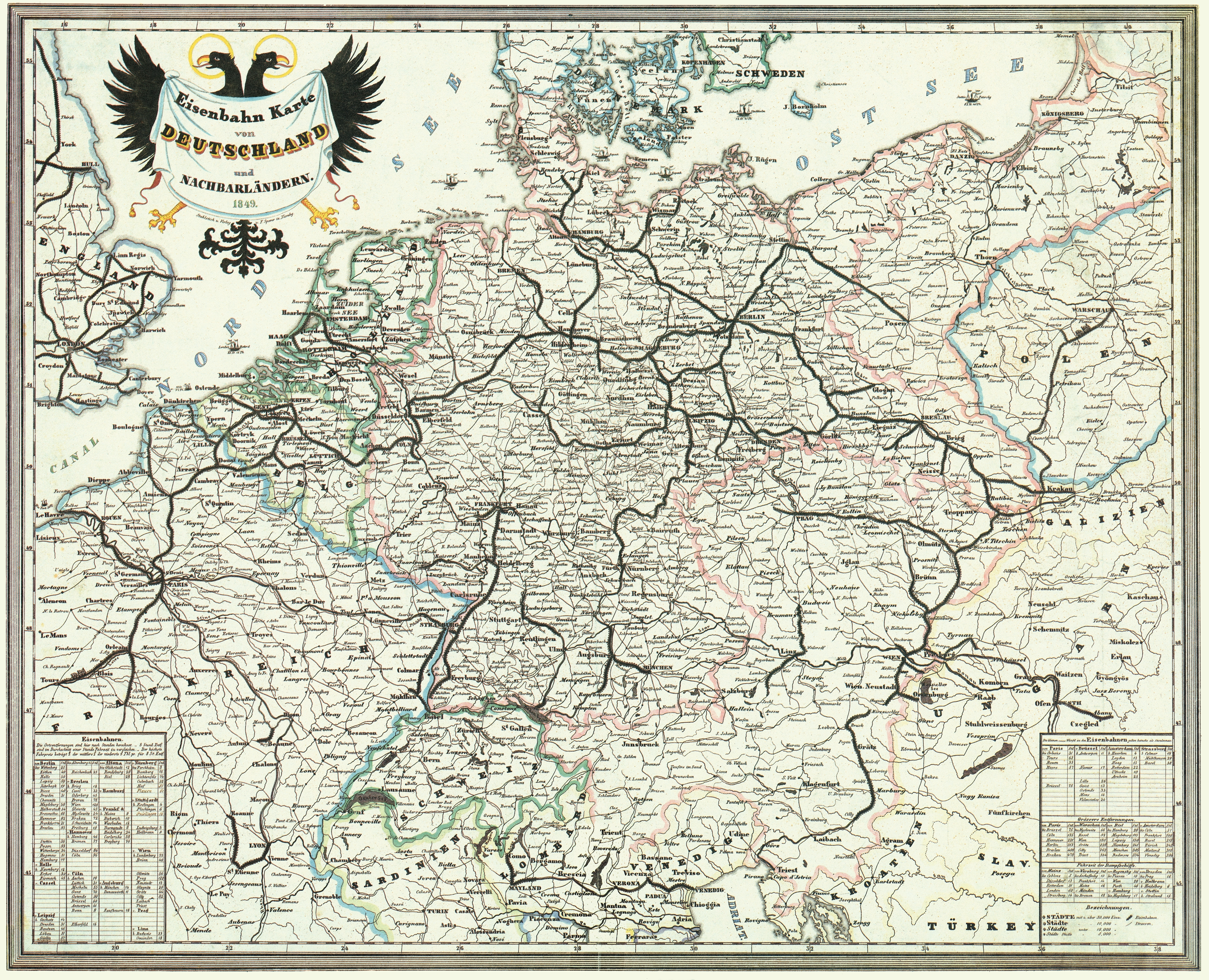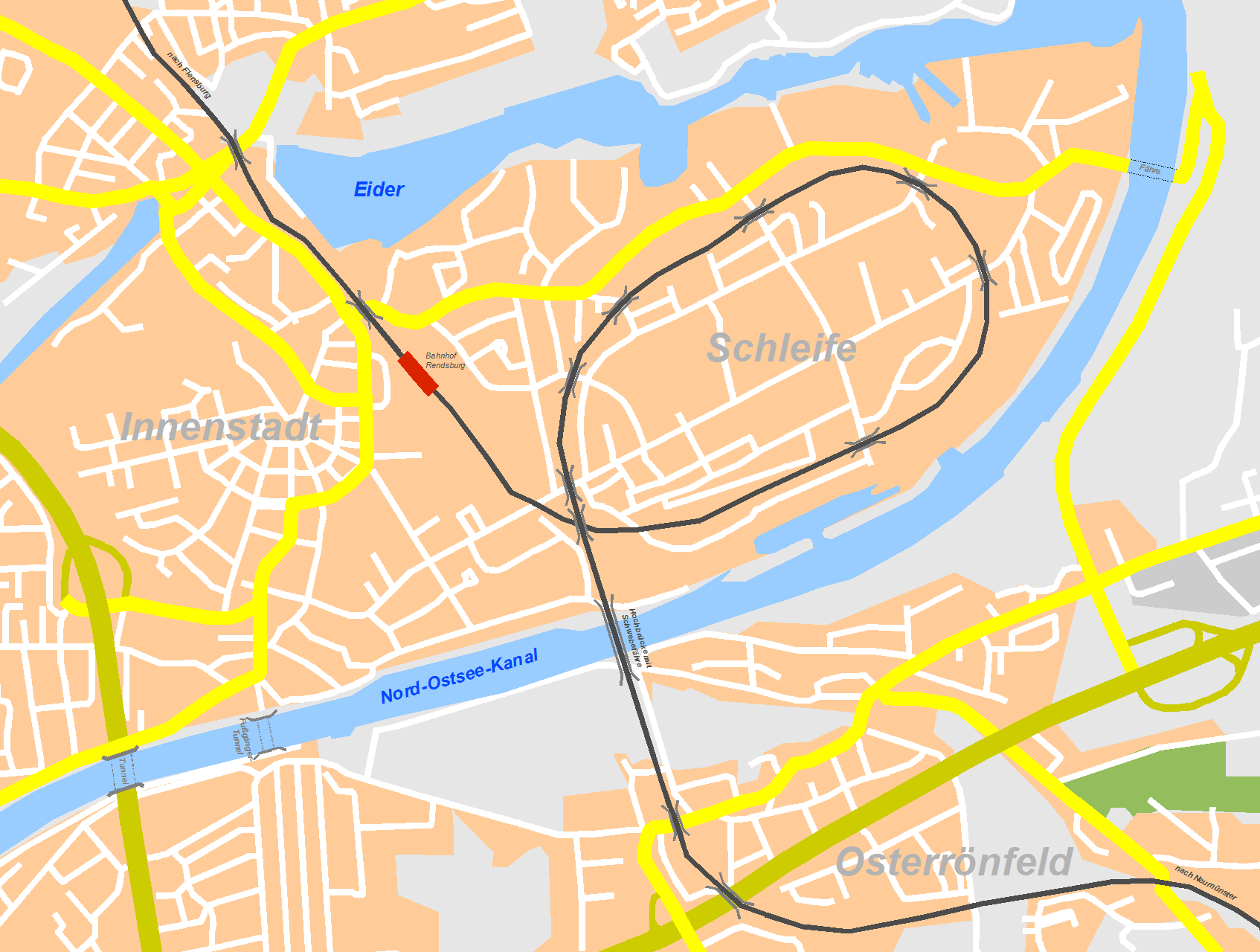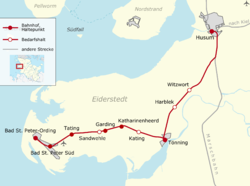Flensburg–Husum–Tönning Railway Company
The railway Flensburg- Husum - Tonning was the first railway line in the Duchy of Schleswig.
Organization and construction
In January 1837 Christian Hansen published jun. his vision idea of Flensburg- Husum - Tönninger railway with an estimated cost of 650,000 Mark Courant and a note that this sum is applied only with the help of well-funded English investors. From the government in Copenhagen was issued on October 31, 1839 a resolution that ordered a survey of the mentioned route at government expense. 1840 transferred to the engineer corps of flaunting the technical direction for the construction of the railway. The Corps developed in 1841 two proposals from Flensburg's harbor with a considerable slope or through the paper Mühlethal lower pitch with a station on the then undeveloped Plankenmai; both proposals contained the railway line to the right of treene. From Easter Ohrstedt a branch line was projected to Schleswig and Rendsburg. On February 28, 1841, Danish King granted a license for the establishment of a corporation to implement; this was the first such concession in the Danish influence.
In the recession of 1848, however, these efforts temporarily sank into oblivion. The rail line has been funded under the reign of King Frederik VII of Denmark by the British firm Peto, Brassey & Betts Morton Peto below in the years 1852-1854 and designed. For buildings, the architect Michael Gottlieb Bindesbøll was available; Originals are still preserved in Schwesing and Husum. The Danish king had Peto in 1852 promised a concession to an exemption from Customs trade for livestock transports. It was only in 1852 traveled to the English engineer and started from Tonning from to build the track with English material. To June 1, 1854 invited Morton Peto as president of the corporation to a special trip to visit the route from Holzkrug ( south of the present station Flensburg- Soft ) to a Tonning. On April 1, 1854, the route from Tonning until then important station on Ochsenweg Holzkrug in Flensburg was taken temporarily into operation, after completion of a temporary of the "English", including port railway station in Flensburg followed on 4 October official operation, the inauguration by the King was executed on 25 October of the same year.
At the same time the important branch line of Easter Ohrstedt about Klosterkrug (near Schleswig ) to Rendsburg was put into operation, which opened in 1845 on the Rendsburg- Neumünstersche Railway (RNE ) connection to the Altona- Kiel railway produced. An extension to the north of the wood jug at Flensburg to Haderslev was completed on May 2, 1866. The year before, the newly renamed FHTE as Südschleswigscher Eisenbahn AG.
Operation
The company also built the port railways in Flensburg and Tonning. The carrier company itself christened Flensburg- Husum - Tönninger Railway Company ( FHTE ). The main reasons for a rail link between the Baltic Sea port of Flensburg and Husum North Sea ports and especially Tonning at the Eider estuary was the export of live cattle to England and from there the import of coal. But back in 1857, was just as expensive as the sea route through the Skagerrak with the abolition of the Sound tax levied by Denmark of the transport on the route with a transfer or transshipment in Flensburg and Tonning. The transport took over a line oxen called ferry line to Blackwell in London; Your ferry Schleswig could take on a crossing 800 oxen and 1300 sheep. 1859 were exported to England more than 32,000 oxen. Until 1886, the transport numbers developed. The export was in 1886 but abruptly canceled because the British government responded to the foot-and-mouth disease with import prohibitions.
The railway connection caused a conversion of the post office in Flensburg. She put her overland stagecoach courses parallel to the track and taught how to use them at the track on the first trains running three daily trains from. The Flensburg newspaper now turned their days instead edition finished at 17.00 clock at 14.00 clock in order to use the noon train for their dissemination throughout the region of Schleswig.
Route changes
While most of the route is in operation today, legs are gone, some were already in the remodeling of Schleswig-Holstein's rail network after the conquest of the country by the German Confederation in 1864 and the annexation by the Kingdom of Prussia, 1866. On December 29, 1866 a section between Eggebek and Easter Ohrstedt abandoned in favor of the new direct Nordsüdverbindung Eggebek - Juebek. 1902, the current Western leadership has been degraded by the Südermarsch between Husum and Platenhörn and replaced by the path on the east guided Marschbahn. 1928 replacing the current station Flensburg the old head station at the end of the conveyor, which became Germany's first bus station.
By restructuring the route Flensburg- Husum - Tonning is now broken down into parts of three railway lines:
- Section Flensburg- Eggebek,
- Husum - Kiel ( between Sollbrück and Husum, and Klosterkrug ( identical in Schleswig ) - Rendsburg ) and
- Section Husum - Tonning the railway line Husum - Bad St. Peter -Ording










